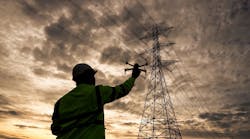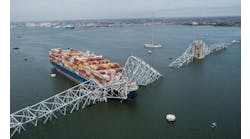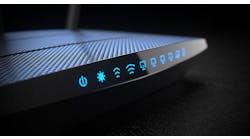The electric grid is interconnected. The interconnectivity goes not only between utilities but also between facilities connected to the grid. This fact is pointed out in various interoperability studies. The Chinese (and other threat actors) are exploiting this cybersecurity gap.
Background
China has been targeting the U.S. electric system (and other critical infrastructures) for more than 25 years. In 2001, the Chinese cyberattacked the California Independent Systems Operator (CAISO) attempting to take over CAISO’s SCADA system. In the 2012-time frame, the Chinese cyberattacked Telvent, a control system supplier to the gas and electric industry.
In May 2020, Presidential Executive Order 13920 was issued to address the discovery of hardware backdoors in a large Chinese-made transformer installed in a critical substation. Concerns of what might have been installed led to a Chinese power transformer being sent to the U.S. Department of Energy (DOE)’s Sandia National Laboratory (SNL) for detailed inspection. Chillingly, the results of the SNL inspection report were highly classified.
From the publicly available information, the Chinese learned from the U.S. electric industry cybersecurity requirements what equipment was in scope and what was not and, therefore, what was monitored and what was left unmonitored. Additionally, many utilities have moved away from substation inspections on a scheduled basis.
This change has led to a lack of consistent information that can be used to analyze any changes that may have occurred. The Chinese used that information in their approach, but the cyber defenders have not addressed this gap. This is like the Maginot Line from World War II: strong, but easily bypassed. Yet, SANS Institute prepared a report that took strong exception to the incident being real by pointing to a lack of direct confirmation of concerns about a hardware vulnerability in the transformer supply chain. The SANS report was based entirely on a network assessment. Unfortunately, this wasn’t a network problem that could be detected by either network security monitoring or network threat intelligence.
In 2021, the Director of National Intelligence Council’s National Intelligence Estimate wrote: “China is the world’s leading supplier of advanced grid components for ultra-high-voltage systems, such as transformers, circuit breakers, and inverters, which we assess creates cyber vulnerability risks.”
Lack of utility response
From 2006 through 2023, the U.S. has imported almost 450 transformers over 10,000 kVA from China. Of these, more than 360 of these Chinese-made transformers exceeded 100,000 kVA (these are the large transmission system transformers necessary for the operation of the grid). Moreover, after EO-13920 was suspended by the Biden administration, utilities continue to buy Chinese equipment, including more than 125 large Chinese transformers since 2020.
Inverters are used in solar panels, electric grids, power generation, manufacturing, water/wastewater, etc. The U.S. has imported more than 170,000,000 inverters from China since 2002 (5 million in 2021).
Chinese attacks against electric grids do not just involve compromised transformers and inverters. In 2019, Yokogawa issued a notice to their customers that counterfeit pressure and differential pressure transmitters were found in North America. These devices are critical for reliable operation and process safety. Counterfeit process sensors and transmitters have been found from multiple control system suppliers.
Making a counterfeit transmitter that looks similar enough to a real device to be accepted is not cheap and wouldn’t be done on a one-off basis. These counterfeit transmitters can even be found on eBay and Amazon, where they cost significantly less than a real device when purchased from an authorized distributor. Making matters worse, process sensors have no cybersecurity, authentication or cyber forensics. Yet in February 2024, DOE and National Association of Regulatory Utility Commissioners (NARUC) issued “Cybersecurity Baselines for Electric Distribution Systems and DER”, and sensors were not mentioned. Process sensors are also not addressed in North American Electric Reliability Corporation (NERC)’s Supply Chain Criteria and in the NERC CIP standards.
An example of why process sensors are so important was a case when the failure of a single sensor in a medium-sized power plant that caused a 200 MW load swing in Florida caused a 50 MW load swing in New England.
On Feb. 27, 2024, the report to the president, “Strategy for Cyber-Physical Resilience: Fortifying Our Critical Infrastructure for a Digital World” was issued. According to the report, “Cyber-physical resilience is the capacity of an integrated system to keep running—even if not at peak performance—should it lose specific functions. Challenges include degradation or cessation of one or more aspects of the computational or physical functions due to component failures, human errors, natural disasters, or malicious attacks. For instance, if one or more of computer-based controls, sensors, or Internet communications fail, the system should continue to operate. We should have an understanding in advance of how and how well such operations will proceed in light of one or more failures.”
However, there are processes where a compromise of one sensor, whether unintentional or malicious, can cause unexpected catastrophic failure such as the load swing example. Compromising one sensor can also provide critical information to an adversary even though the sensor appears to be operating properly.
There is a continuing concern with the hardware backdoors in large electric transformers to be able to receive spoofed sensor signals compromising transformer operation. The grid can operate even if a transformer is inoperable. However, engineers can be limited to react due to unexpected voltage fluctuations when a transformer malfunctions. The components on a Chinese transformer don’t necessarily need to be used for sabotage to cause a problem with the grid. Knowing the load going through the transformer would allow the Chinese to know the best time for cyberattacks to occur.
As the grid is interconnected, a compromised Chinese transformer connected to a non-Chinese transformer can compromise the non-Chinese transformer. Examples of this include a case of two Chinese transformers not owned by Duke Energy that directly interface with Duke Energy’s system and a neighboring utility with a large Chinese transformer that interconnects with AEP. It is unclear what the impact could be on AEP’s and Duke’s grids if the Chinese transformers are compromised.
Some of the largest utilities in the country, including the “leaders in grid security”, have Chinese transformers and other critical grid equipment. Why aren’t U.S. utilities removing Chinese components from our grids?
DOD is waking up
Duke Energy agreed under pressure from the U.S. Congress to decommission energy storage batteries produced by Chinese battery giant CATL installed at Marine Corps Base Camp Lejeune in North Carolina over concerns that the batteries pose a security risk. Reuters reported that Duke Energy had made plans to decommission the CATL-made batteries that were commissioned less than a year ago in March 2023.
However, by year’s end, Duke Energy had disconnected the battery storage project, citing concerns raised by lawmakers and experts around CATL’s close ties to China’s ruling Communist Party. The batteries and their inverters may have cyber vulnerabilities that could be used to compromise the electricity grid. Duke Energy stated that the battery system had nevertheless been designed with “security in mind” and that the batteries “were not connected in any way to Camp Lejeune’s network or other systems.” This is very dubious, especially from a leader in grid cybersecurity.
U.S. Government is partially awake
In December 2023, Brandon Wales, executive director of the Cybersecurity and Infrastructure Security Agency, stated, “It is very clear that Chinese attempts to compromise critical infrastructure are in part to pre-position themselves to be able to disrupt or destroy that critical infrastructure in the event of a conflict, to either prevent the United States from being able to project power into Asia or to cause societal chaos inside the United States — to affect our decision-making around a crisis. That is a significant change from Chinese cyber activity from seven to 10 years ago that was focused primarily on political and economic espionage.”
On Feb. 18, 2024, FBI Director Wray confirmed that China has “offensive weapons within our critical infrastructure poised to attack whenever Beijing decides the time is right.” Citing Volt Typhoon, the name given to the Chinese hacking network that was discovered last year lying dormant inside U.S. critical infrastructure, Wray said that Beijing-backed actors were pre-positioning malware that could be triggered at any moment to disrupt U.S. critical infrastructure. The Justice Department and FBI took action in December after obtaining court approval to dismantle a botnet, or network of hacked devices, consisting of small office and home office (SOHO) routers. Mostly from Cisco or Netgear, the routers were vulnerable because they had reached their so-called end-of-life, meaning they were no longer receiving routine security updates from the manufacturers. Yet there was no mention of the compromised Chinese transformers.
The Biden administration plans to invest billions in the domestic manufacturing of cargo cranes, seeking to counter fears that the prevalent use of China-built cranes with advanced software at many U.S. ports poses a potential national-security risk. In 2021, three of the largest port cranes in North America arrived at the Port of Oakland from China.
This did not appear to be a problem to PG&E, even though the Biden administration’s actions follow a Wall Street Journal investigation last year that revealed fears that giant cranes made by a Chinese, state-owned company in use at a number of America’s ports could present an espionage and disruption risk. Cranes at some ports used by the U.S. military were flagged as surveillance threats. Officials also raised the concern that the software on the cranes could be manipulated by China to impede shipping or, worse, disrupt or damage the operation of the crane.
“By design these cranes may be controlled, serviced and programmed from remote locations,” said Rear Admiral John Vann, who leads the Coast Guard cyber command, during a press briefing. “These features potentially leave Chinese-manufactured cranes vulnerable to exploitation,” he said. There was no mention of the potential impact on the electric grids that supply power to the ports including Chinese port equipment that can be a trusted backdoor back into the electric grid.
Despite these alarming words, U.S. electric utilities continue to make the U.S. grid more vulnerable by using critical Chinese-made equipment and the U.S. government continues to focus on network vulnerabilities which is not what the Chinese are targeting. Just like the Chinese transformers, the Chinese cranes are comparably well-made and inexpensive and account for nearly 80% of ship-to-shore cranes in use at U.S. ports.
U.K. is taking action
The U.K. appears to be concerned about China’s efforts to cyberattack critical infrastructure. As a result, Britain's National Grid has started removing Chinese components from their electricity transmission network over cybersecurity fears. In 2015, French state-owned nuclear giant EDF announced that it had agreed to develop the Sizewell C nuclear plant with China General Nuclear Power Group (CGN). But over the years, increasing tensions between London and Beijing finally led to the Government deciding it did not want a Chinese company involved in one of the U.K.’s biggest infrastructure projects and bought out CGN. Why aren’t U.S. utilities removing Chinese components from our grids?
Australia is starting to move
Australia also has Chinese-made transformers and is similarly concerned. Cybersecurity standards for solar inverters, batteries and electric vehicle chargers are being developed by the Australian government amid concerns some equipment could leave the nation exposed to foreign interference particularly equipment from Chinese manufacturers. The questions came months after a report from the Cybersecurity Co-operative Research Centre warned internet-connected devices, including solar inverters, could introduce security vulnerabilities if not correctly regulated. But federal energy department told the committee the government had established a dedicated division to look at “security issues associated with distributed energy resources” including rooftop solar technology, electric vehicle chargers and large batteries, and would develop a set of safety standards to regulate their use.
“We have providers, including Huawei, which were banned from the NBN, our 4G and 5G networks, who are finding a back way into providing, not just services to the broader economy and presumably critical infrastructure providers, but also federal government services.” The questions came after the report by the Cybersecurity Co-operative Research Centre in August last year identified potential issues with internet-of-things devices, “notably photovoltaic inverters”. Why didn’t DOE and NARUC address the use of Chinese inverters in their February 2024 report?
Summary
Chinese transformers, cranes, inverters, process sensors, etc. are comparably well-made and inexpensive leading to their continued use in U.S. critical infrastructures. Despite warnings, the utility sector continues to ignore the cyber threat from Chinese equipment. Moreover, the U.S. government and private industry continue to focus on network vulnerabilities to the exclusion of hardware issues that can cause long term physical damage.




